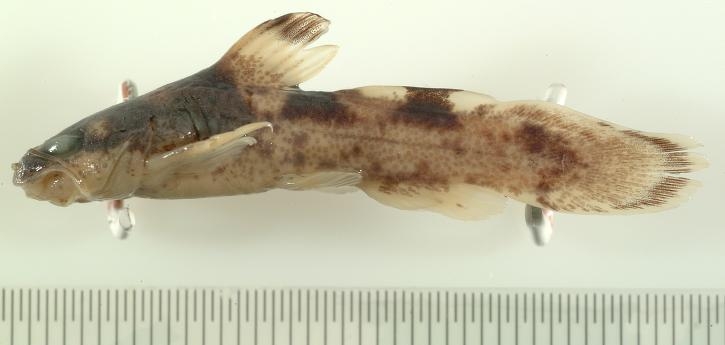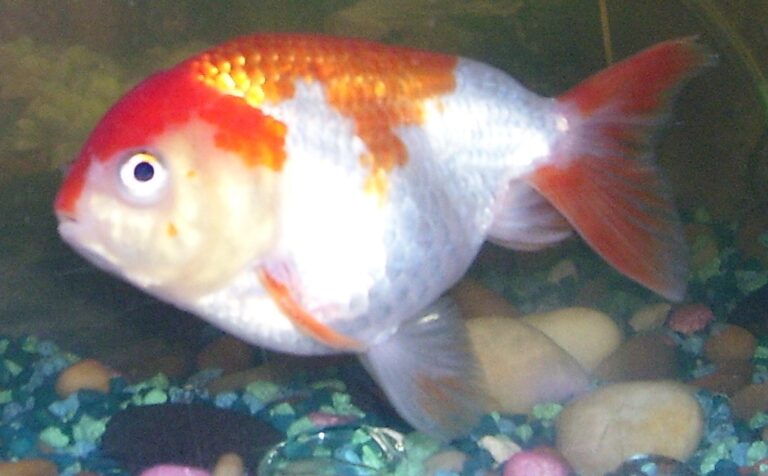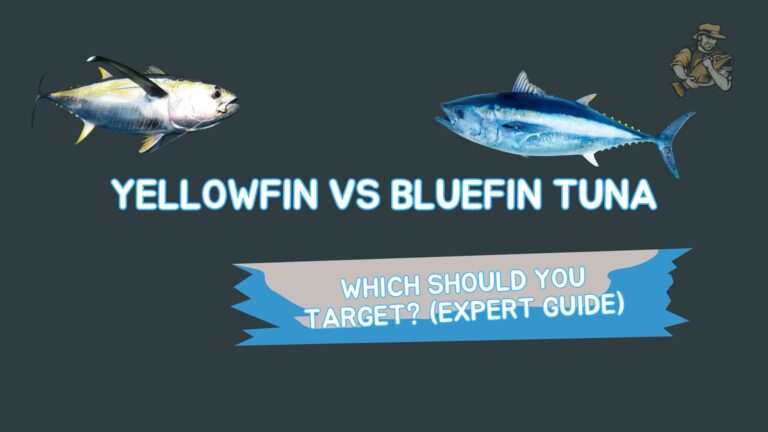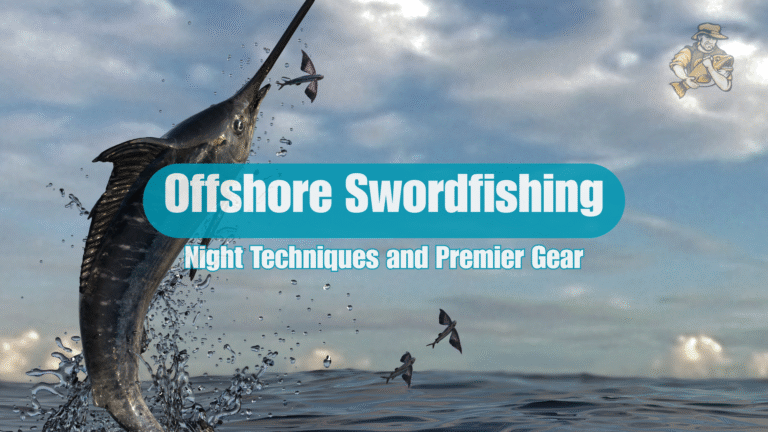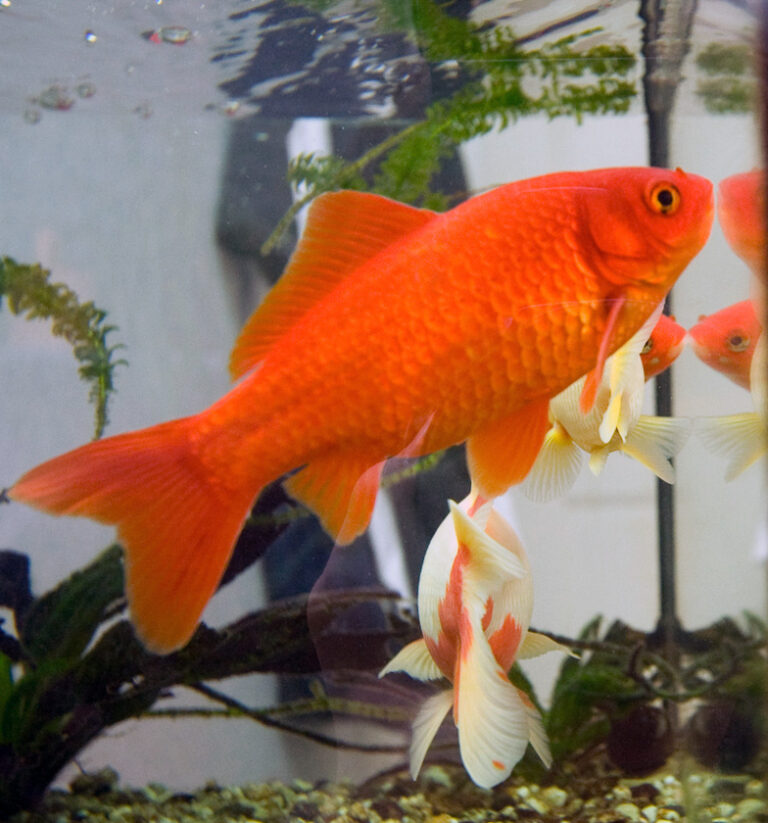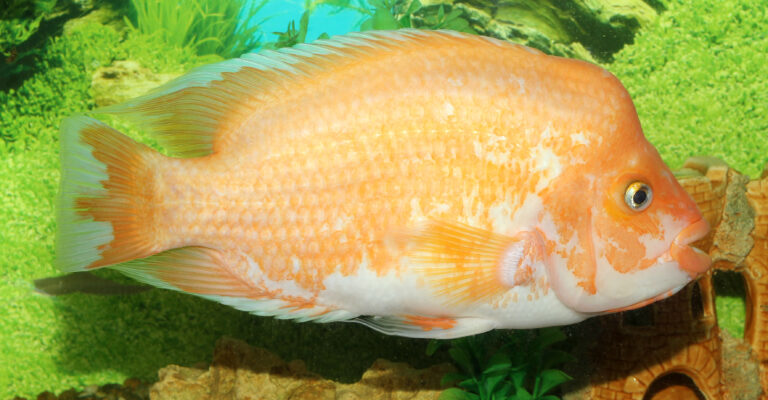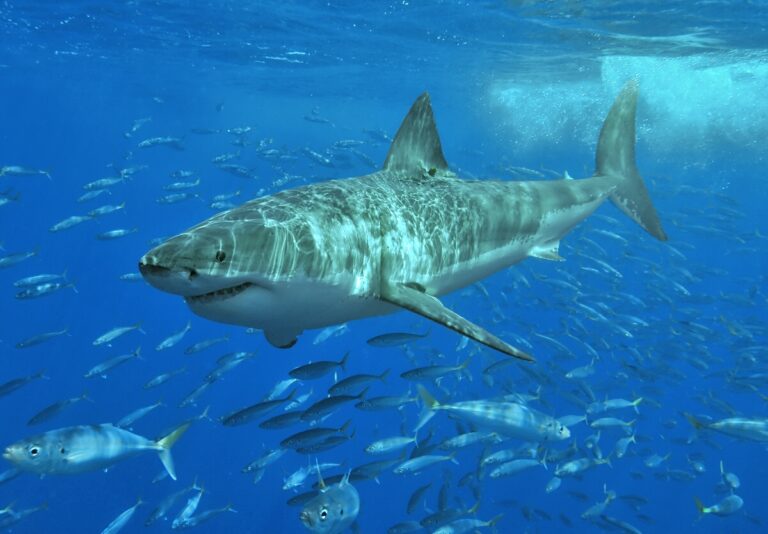Deep Water Fishing Mastery: 7 Proven Strategies
By Adam Hawthorne | Last Modified: April 26, 2025

When surface waters turn quiet and shoreline spots fail to produce, the answer often lies in the depths. Deep water fishing opens up a whole new dimension of angling opportunities, but it requires specific techniques and equipment that many fishermen overlook. After years of chasing fish from the shallows to the abyss, I’ve discovered that mastering deep water tactics can transform frustrating days into memorable outings.
Deep Water Fishing Strategies That Actually Work
The challenge with fishing deeper water isn’t just finding fish – it’s presenting baits naturally and detecting those subtle takes that are easy to miss. Whether you’re working a lake basin, offshore structure, or ocean depths, these seven proven strategies will help you connect with fish that other anglers miss.
Successful deep water fishing requires understanding not just where fish hold in the depths, but how they behave differently than their shallow-water counterparts. Water pressure, light levels, and temperature all influence how fish feed when they’re deep – making presentation and detection crucial skills to develop.
Before diving into specific techniques, remember that deep water fishing requires more patience and precision than casting along shorelines. Fish often move slower in deeper zones and may be more concentrated around specific structure. The rewards, however, are worth the effort – with some of the largest specimens of many species calling these depths home.
1. Master Your Electronics for Finding Deep Structure
Modern fishing electronics have revolutionized deep water fishing more than perhaps any other aspect of the sport. Today’s fish finders don’t just show you depth – they reveal detailed structure, identify fish, and even display water temperature at various depths.
When fishing deep water, I always start by using side-imaging to locate promising structure – humps, ledges, or submerged timber that might hold fish. Once I’ve found potential spots, I switch to down-imaging for a more detailed vertical view. The key is understanding what you’re seeing on the screen and how it relates to the actual underwater environment.
For example, on Lake Michigan, I’ve found that small subtle breaks on otherwise featureless basin areas can concentrate fish that would be impossible to locate without quality electronics. These aren’t the obvious humps or points that everyone targets – they’re the slight depth changes that appear as subtle variations on your depth finder.
According to a comprehensive study in the North American Journal of Fisheries Management, fish relating to deep structure typically position themselves on the up-current side of features, where baitfish become more vulnerable. Using this knowledge alongside your electronics can dramatically increase your success rate.
Some essential settings adjustments for deep water scenarios:
- Increase sensitivity as you move deeper
- Adjust the zoom feature to focus on the bottom zone
- Use split-screen views to compare sonar with mapping
- Set depth alarms for when you drift off structure
- Use trackback features to mark exactly where fish appeared
The Humminbird HELIX series offers particularly good deep water performance with their CHIRP sonar technology, which provides clearer separation of targets and structure even at extreme depths.
2. Vertical Jigging: The Ultimate Deep Precision Technique
When fish are holding tight to specific deep structure, few techniques can match the effectiveness of vertical jigging. This approach allows for precise presentation directly below your boat, perfect for targeting fish you’ve spotted on electronics.
The fundamentals of effective vertical jigging include:
- Position your boat directly over the fish or structure
- Use a sensitive rod with enough backbone for hooksets
- Drop your lure to the desired depth
- Implement a rhythmic but varied jigging motion
- Pay close attention to line for detecting subtle strikes
I’ve found that a medium-heavy spinning rod with a fast action provides the perfect combination of sensitivity and power for most deep water jigging scenarios. Pair this with braided line (30-50 lb test) and a fluorocarbon leader to maximize feel while minimizing visibility.
For lure selection, metal jigs like the Strike King Denny Brauer Structure Jig work exceptionally well in depths beyond 30 feet. Their weight helps maintain contact with the bottom while their profile mimics the forage that deep water predators target.
The cadence of your jigging motion often matters more than the lure itself. On a tough day at Lake Superior, I discovered that walleye were completely ignoring aggressive rips but would strike immediately on a subtle 2-inch lift followed by a long pause. This kind of fine-tuning is essential for deep water success.
Bass fishing legend Kevin VanDam discusses the importance of jigging cadence in his article for Bassmaster, noting that deeper fish often prefer slower, more subtle movements compared to their shallow counterparts.
3. Trolling with Precision: The Deep Water Coverage Strategy
When deep water fish are scattered or you’re trying to locate active schools, trolling becomes the method of choice. Modern trolling techniques allow anglers to present baits at exact depths while covering substantial water – a perfect combination for deep water success.
Effective deep water trolling requires:
- Precise depth control tools (downriggers, diving planers, or lead core line)
- Understanding the relationship between speed and lure action
- Proper spacing between multiple lines
- Attention to subtle changes in structure and depth
- Continuous monitoring of electronics while moving
For managing specific depths, downriggers have revolutionized deep water trolling. These devices use a weighted cable to hold your lure at exact depths regardless of boat speed or line thickness. The Cannon Magnum series offers particularly reliable performance for serious deep water trollers.
When targeting suspended fish in thermoclines, maintaining your lure in that specific temperature band is critical. Many serious anglers now use temperature probes on their downriggers, as research from Michigan State University’s Fisheries Division shows that even a 2-degree temperature difference can determine whether fish will strike or ignore your offerings.
Lure selection for deep trolling often differs from shallow presentations. In deeper zones, I’ve had consistent success with:
- Larger profile spoons for lake trout and salmon
- Deep-diving crankbaits for walleye and bass
- Spinner rigs with bottom bouncers for structure-oriented species
- Artificial squid skirts for pelagic ocean species
Trolling speed becomes increasingly important as you move deeper. I typically start around 1.8 mph and adjust based on results, but keep detailed notes about productive speeds for different species and conditions.
4. Drop Shot Rigging for Deep Precision
The drop shot rig has revolutionized deep water fishing, offering unparalleled finesse presentation while maintaining constant bottom contact. This technique excels when fish are holding tight to structure but proving reluctant to chase more active presentations.
The key components of an effective drop shot system include:
- A sensitive rod with fast action
- Braided mainline (10-20 lb) with fluorocarbon leader (6-12 lb)
- Small, sharp hooks (size 1-2 for larger baits, 4-6 for finesse)
- Tungsten weights for better feel and less snags
- Subtle soft plastic baits with natural action
When fishing depths beyond 30 feet, I increase my weight size to at least 3/8 oz to maintain better contact and feel with the bottom. The cylindrical shape of tungsten weights also transmits bottom composition information better than traditional lead weights.
According to professional bass angler Aaron Martens in his Fishing League Worldwide interview, the distance between hook and weight becomes increasingly important as you fish deeper. His recommendation of 12-18 inches for depths beyond 30 feet has proven consistently effective in my experience.
For bait selection, subtle is usually better in deep water scenarios. Small straight-tail worms, minnow imitators, and small creature baits typically outperform larger, more aggressive offerings. The Roboworm Straight Tail series has been particularly effective in my deep water adventures.
One technique adjustment I’ve found crucial for deep drop shotting is slowing down significantly. The bite often comes after the bait has remained completely motionless for 30+ seconds – a level of patience many anglers lack.
5. Deep Structure Fishing with Heavy Jigs
When targeting deep structure like rock piles, ledges, or submerged timber, heavy jigs provide the perfect combination of depth control and realistic action. This technique excels for species that relate tightly to specific structural elements rather than suspending in open water.
For successful deep structure jigging:
- Select jigs heavy enough to maintain bottom contact (typically 3/4 oz or heavier)
- Choose compact profiles that sink quickly and snag less
- Use subtle natural trailers that add action without bulk
- Focus on the edges and transitions between structure types
- Make precise casts to specific targets identified on electronics
The retrieve for deep structure jigs typically involves maintaining contact with the bottom while implementing subtle hops and drags. I’ve found that many strikes come on the fall after lifting the jig, so maintaining line tension during this phase is critical.
Bass fishing expert Mike Iaconelli explains in his Bass Resource article that understanding the specific positioning of fish on structure can be the difference between success and failure. Up-current edges, shade lines, and transition points between hard and soft bottoms often concentrate fish even within the structure itself.
Jig trailers matter tremendously in deep water. While bulky trailers create more action, they also slow the jig’s fall and create more water resistance. For depths beyond 25 feet, I prefer compact trailers like small craws or twin-tail grubs that add subtle action without compromising depth control.
6. Live Bait Rigging for Deep Water Success
When all else fails in deep water scenarios, properly presented live bait remains one of the most effective approaches. Unlike artificial presentations, live bait provides visual, scent, and action cues that can trigger strikes from even the most reluctant deep water predators.
Effective deep water live bait presentations require:
- Proper rigging techniques that keep bait lively at depth
- Understanding how water pressure affects bait behavior
- Species-specific bait selection for target fish
- Appropriate weight systems for depth control
- Sensitive strike detection methods
For walleye in deep basin areas, I’ve found that large, lively minnows rigged on a floating jig head suspended 1-2 feet off bottom can be absolutely deadly. The Northland Tackle Floating Rig provides the perfect system for this presentation.
When targeting deep structure-oriented species like grouper or snapper, the classic egg sinker rig with a circle hook and live baitfish remains hard to beat. According to saltwater fishing guide Captain Mark Johnson in Sport Fishing Magazine, positioning the bait slightly above structure rather than directly in it can reduce snags while still triggering competitive feeding responses.
For species that feed primarily by scent like catfish or certain saltwater species, adding natural scent enhancers to live bait can extend their effective range significantly. Products like Pro-Cure Super Gel have extended my deep water success considerably in low-visibility conditions.
The importance of proper bait selection cannot be overstated. According to research from the American Fisheries Society, most predatory fish become increasingly selective about prey size (not necessarily species) as they grow larger. This means upsizing your bait is often key when targeting trophy specimens in deep water.
7. Understanding Seasonal Deep Water Movements
Perhaps the most overlooked aspect of successful deep water fishing is understanding the seasonal movements that dictate when fish utilize different depth zones. This knowledge allows you to target productive areas before other anglers discover them.
Key seasonal patterns to track include:
- Summer thermocline development and its effect on oxygen levels
- Fall turnover periods that temporarily disrupt deep patterns
- Winter concentration areas in the deepest available water
- Spring warming trends that trigger vertical movements
During peak summer, many species relate strongly to the thermocline – that middle layer of water where temperature drops rapidly. Using a temperature probe like the Fish Hawk TD allows you to identify this zone precisely and present baits at the optimal depth.
According to fisheries biologist Dr. Keith Jones in his research for the Berkley Fishing Science Lab, fish often suspend at specific depths where temperature, oxygen levels, and light penetration create ideal conditions – even when these zones aren’t associated with obvious structure. Targeting these invisible “structure” elements has accounted for some of my most productive deep water outings.
Fall turnover – when cooling surface temperatures cause lakes to mix – temporarily disrupts deep water patterns but creates opportunity. During these periods, focusing on the transitions between mixing zones can produce exceptional catches as baitfish become disoriented.
Winter brings the most consistent deep water patterns for many species. On Lake Erie, I’ve found that targeting the deepest available holes in 50-70 feet of water consistently produces the largest walleye of the season when other anglers struggle in shallower zones.
FAQ: Deep Water Fishing
What defines “deep water” in fishing terms?
While “deep” is relative to the waterbody, generally water beyond 20-30 feet is considered deep for most inland lakes, while ocean deep water fishing typically refers to depths beyond 100 feet. The defining characteristic is that the water is significantly deeper than where most casual anglers focus their efforts. According to NOAA’s National Marine Fisheries Service, different species have preferred depth ranges that can vary dramatically by season and location.
What’s the most important equipment for deep water fishing?
Quality electronics rank as the most essential equipment for serious deep water fishing. A good fish finder with side and down imaging capabilities will locate structure and fish that are otherwise invisible. The ability to distinguish between bottom composition types (rock, sand, mud) becomes increasingly important as you fish deeper water. The Fishing Tech Journal rates modern sonar systems as having improved deep water fishing success rates by over 60% compared to traditional methods.
Do I need special line for deep water fishing?
Yes, line choice becomes increasingly important in deep water scenarios. Braided lines offer minimal stretch, which improves sensitivity and hooksets at depth. Fluorocarbon leaders provide abrasion resistance and low visibility. For extreme depths, specialized low-stretch monofilament like Sufix Deep Water line can be beneficial, as it combines some stretch for shock absorption with improved sensitivity compared to standard monofilament.
How do I detect bites in very deep water?
Bite detection improves with: (1) high-sensitivity graphite rods, (2) low-stretch lines, (3) visual indicators like rod tips or line markers, and (4) electronics that show your lure and fish simultaneously. Many deep water specialists use braided line with bright coloring to visually detect subtle movements indicating strikes. Advanced techniques include watching your electronics for fish approaching your bait and maintaining direct vertical presentation to maximize feel.
What’s the best time of year for deep water fishing?
Deep water fishing can be productive year-round, but peaks during summer when many species seek cooler temperatures and during winter when they seek temperature stability. According to the Freshwater Fishing Hall of Fame research archives, the most consistent trophy catches from deep water occur during mid-summer and mid-winter periods when shallow water temperatures reach seasonal extremes.
Mastering the Depths
Deep water fishing represents the frontier of angling for many fishermen. The techniques require more precision, better equipment, and deeper understanding of fish behavior – but the rewards include consistent action when shallow waters fail and opportunities at trophy-class fish that seldom venture into the shallows.
The key to consistent deep water success lies in the details – precise boat positioning, understanding how your electronics interpret the underwater world, and presenting baits in ways that trigger natural feeding responses even in these challenging environments.
What I’ve found most fascinating about deep water fishing over decades on the water isn’t just the size of fish available, but how differently they behave compared to their shallow water counterparts. Take these seven strategies, adapt them to your local waters, and you’ll discover an entirely new dimension to your fishing success.
Have you had success fishing deep water? What techniques have worked best in your home waters? I’d love to hear about your experiences in the comments below.

Meet Adam Hawthorne
I’m a lifelong fishing enthusiast who’s spent years exploring rivers, lakes, and oceans with a rod in hand. At Fishing Titan, I share hands-on tips, honest gear reviews, and everything I’ve learned about fish and ocean life, so you can fish smarter and enjoy every cast.
Share:

Meet Adam Hawthorne
I’m a lifelong fishing enthusiast who’s spent years exploring rivers, lakes, and oceans with a rod in hand. At Fishing Titan, I share hands-on tips, honest gear reviews, and everything I’ve learned about fish and ocean life, so you can fish smarter and enjoy every cast.
Related Articles
-
Madtom Catfish
The Madtom Catfish represents one of North America’s most fascinating yet underappreciated groups of freshwater fish. These diminutive members of the family Ictaluridae, scientifically classified…
-
Lionhead Goldfish
The Lionhead Goldfish represents one of the most distinctive and cherished ornamental varieties within the goldfish family, captivating aquarists worldwide with its unique cranial development…
-
Yellowfin VS Bluefin Tuna: Which Should You Target? (Expert Guide)
Let’s be honest – the first time I saw a yellowfin and bluefin tuna side by side at the dock, I couldn’t tell them apart….
-
Offshore Swordfish fishing: Night Techniques and Premier Gear
The first time I ventured into the darkness 30 miles offshore of Key West for swordfish, I was woefully unprepared. My buddy Dave and I…
Fish Species
-
Telescope Goldfish
The Telescope Goldfish (Carassius auratus) represents one of the most distinctive and recognizable varieties of fancy goldfish in the aquarium trade. Distinguished by its characteristic…
-
Midas Cichlid
The Midas Cichlid (Amphilophus citrinellus) stands as one of Central America’s most recognizable and ecologically significant freshwater fish species. This robust cichlid commands attention through…
-
Colorful Tetra Fish Types Every Aquarium Owner Should Know
When I set up my first freshwater aquarium years ago, tetras quickly became my go-to fish. These colorful little swimmers add life and movement to…
-
Great White Shark
The Great White Shark (*Carcharodon carcharias*) stands as one of the ocean’s most formidable apex predators, commanding respect and fascination across marine ecosystems worldwide. This…

